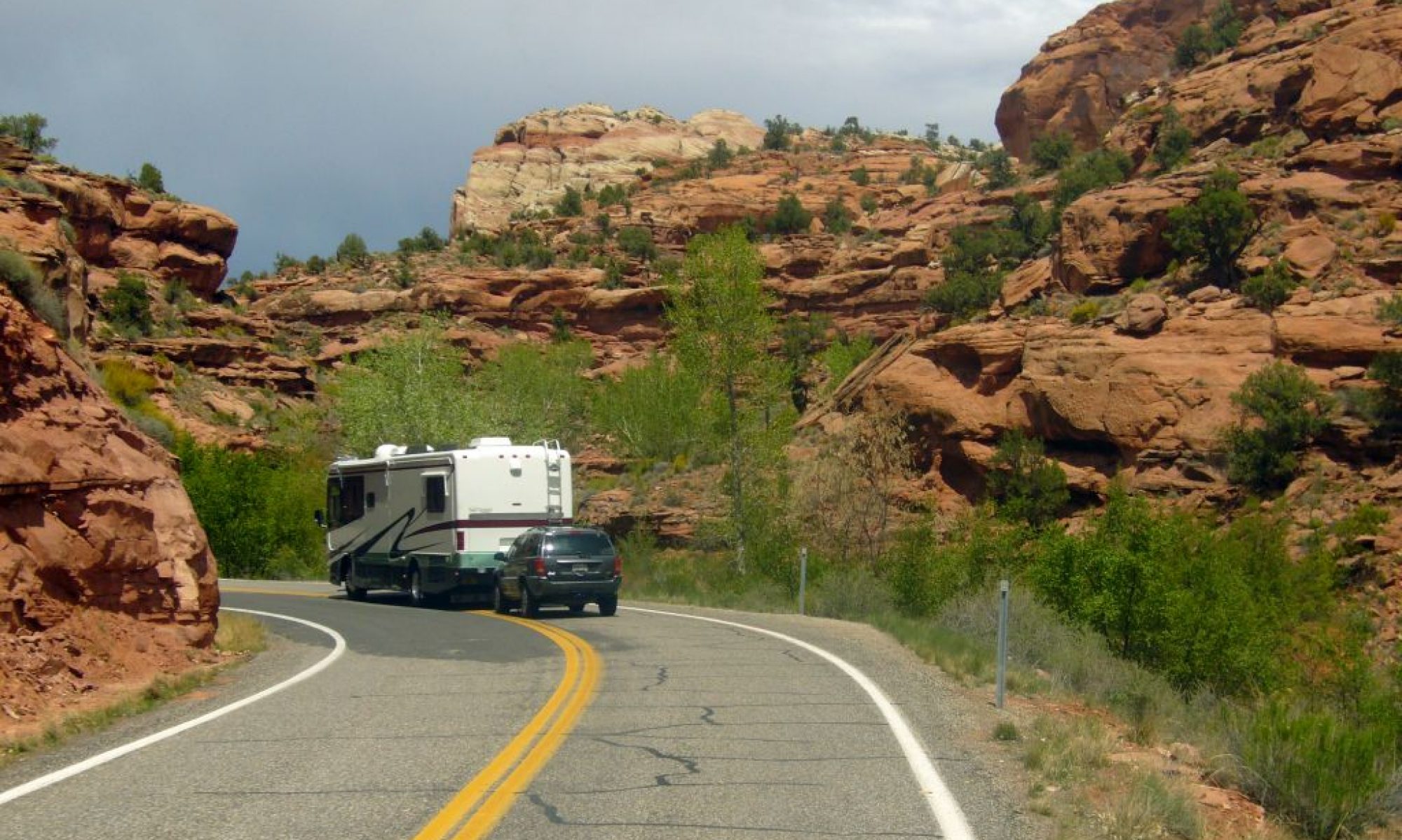Irrespective how ‘good’ the driver is, it’s always helpful to have a ‘spotter’ when reversing into a camp site.
Some people use FRS radios as a way to communicate between the spotter and driver.
Many people use hand signals displayed by the spotter. The following is the procedure the author and driver use with our class A motorhome:
As the spotter, I position myself alongside the left rear of the coach, such that the driver can see me in the side mirror. Our coach doesn’t move if the driver can’t see the spotter.
We’ve learned to ignore well-meaning helpers, either with their own signals or their verbal directions to the driver. Our coach bears some scars from following directions issued by a helper who hadn’t driven our coach.
My driver and I use hand signals, and we both have the understanding that the spotter’s arm stretched out in one direction means that’s the direction the rear of the coach needs to move. Right or left are irrelevant in our signaling. Two arms raised vertically and moved backwards and forwards tell the driver to revers in a straight line. A hand raised with a front-facing palm is the signal for the driver to stop. The driver will be watching the spotter in a mirror, and will steer, move or stop the coach according to the spotter’s signals.
If there is something that can’t be conveyed to the driver via hand signals, I signal STOP and walk up to the driver’s window and discuss it. Similarly, if I need to walk to the opposite side of the coach to check clearance or position, I first signal to the driver to STOP.

